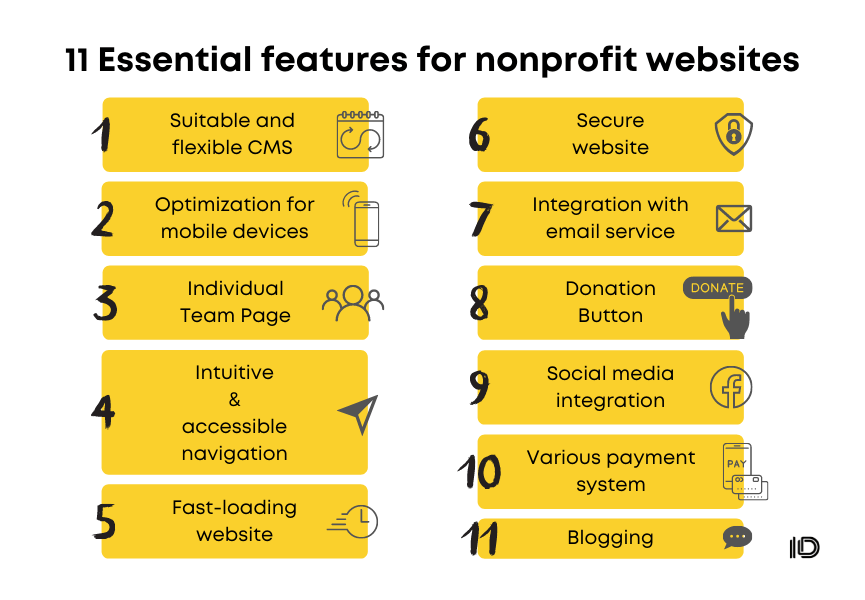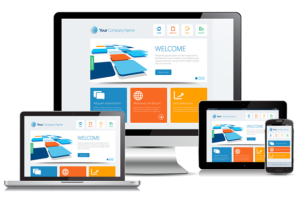NGO website benefits
Table of Contents
NGO website benefits
Importance of Digital Presence for NGOs
In today’s digitally driven world, having a strong online presence is not just beneficial but essential for non-governmental organizations (NGOs). A website serves as a powerful tool to communicate your mission, engage with supporters, raise funds, and amplify your impact. The importance of a digital presence cannot be overstated, as it enables NGOs to reach a global audience, build credibility, and effectively mobilize resources.
Overview of the Current Digital Landscape
The digital landscape is rapidly evolving, with more people relying on the internet for information, social connections, and charitable activities. In this environment, NGOs without a website are at a significant disadvantage. They miss out on opportunities to connect with potential donors, volunteers, and beneficiaries who are increasingly turning to the web for their needs. A well-designed website can serve as the cornerstone of an NGO’s digital strategy, providing a central hub for all online activities.
Purpose of the Article
This article aims to highlight the critical importance of having a website for NGOs. It will explore the various roles a website can play, outline the key features of an effective NGO website, discuss the benefits and challenges associated with having or not having a website, and provide practical guidance on building and maintaining a website. By the end of this article, NGOs will understand why a website is a must-have tool and how to leverage it to maximize their impact.
The Role of a Website in an NGO
Central Hub for Information
A website acts as a central repository of information for an NGO. It provides a platform to share your mission, vision, goals, and the impact of your work. Visitors can easily access information about your programs, initiatives, events, and achievements. This centralization of information helps ensure that your audience is well-informed and can easily find the details they need.
Enhancing Credibility and Trust
In the digital age, credibility is often linked to online presence. A professional and well-maintained website enhances the credibility of an NGO. It signals to potential donors, partners, and beneficiaries that the organization is legitimate, transparent, and committed to its cause. Trust is a crucial factor in securing donations and support, and a website plays a vital role in building and maintaining that trust.
Facilitating Communication and Outreach
Effective communication is essential for the success of any NGO. A website facilitates communication with various stakeholders, including donors, volunteers, beneficiaries, and the general public. It provides multiple channels for engagement, such as newsletters, blogs, and social media integration. These channels allow NGOs to share updates, success stories, and calls to action, fostering a sense of community and involvement.
Types of NGO Websites
Informational Websites
Informational websites are designed to provide detailed information about the NGO, its mission, programs, and impact. These websites serve as a comprehensive resource for anyone looking to learn more about the organization.
Fundraising Websites
Fundraising websites focus on soliciting donations and support from the public. They often feature compelling stories, impact metrics, and clear calls to action to encourage visitors to contribute financially to the NGO’s cause.
Advocacy and Campaign Websites
Advocacy and campaign websites are dedicated to raising awareness about specific issues and mobilizing public support. They typically include resources for education, tools for activism, and ways for visitors to get involved in advocacy efforts.
Community and Volunteer Engagement Websites
These websites are designed to foster community engagement and recruit volunteers. They provide information on volunteer opportunities, ways to get involved, and forums for community interaction.
Key Features of an Effective NGO Website

User-Friendly Design
An effective NGO website should have a user-friendly design that makes navigation intuitive and straightforward. Visitors should be able to find the information they need quickly and easily, without feeling overwhelmed.
Mobile Responsiveness
With the increasing use of mobile devices, it’s crucial for an NGO website to be mobile-responsive. This means that the website should be easily accessible and functional on smartphones and tablets, providing a seamless experience regardless of the device used.
Clear and Compelling Content
The content on an NGO website should be clear, compelling, and aligned with the organization’s mission. It should include well-written descriptions of programs, success stories, and impact metrics to engage and inspire visitors.
Strong Visuals and Multimedia
Visual elements such as images, videos, and infographics can significantly enhance the appeal of an NGO website. They help convey the organization’s story more effectively and can leave a lasting impression on visitors.
Integration with Social Media
Social media integration allows NGOs to extend their reach and engage with a broader audience. By linking to social media accounts and including sharing buttons, NGOs can encourage visitors to spread the word about their work.
Secure Online Donations System
For NGOs that rely on donations, having a secure and user-friendly online donation system is essential. This system should ensure that donors can easily and safely contribute to the organization’s cause.
Benefits of Having a Website for an NGO

Increased Visibility and Reach
A website increases the visibility and reach of an NGO, making it accessible to a global audience. This expanded reach can lead to greater awareness, more support, and increased impact.
Improved Donor Engagement
A well-designed website can improve donor engagement by providing a platform for regular updates, success stories, and impact reports. This ongoing communication helps build strong relationships with donors and encourages continued support.
Enhanced Volunteer Recruitment
An NGO website can serve as an effective tool for recruiting volunteers. By providing information on volunteer opportunities and ways to get involved, NGOs can attract and retain a dedicated volunteer base.
Better Resource Allocation
A website can streamline many administrative tasks, such as event registration, volunteer sign-ups, and donation processing. This efficiency allows NGOs to allocate their resources more effectively and focus on their core mission.
Effective Advocacy and Campaigning
A website provides a platform for advocacy and campaigning, enabling NGOs to raise awareness about important issues and mobilize public support. Through blogs, petitions, and social media integration, NGOs can amplify their voice and drive change.
Streamlined Operations
By integrating various tools and systems, a website can help streamline the operations of an NGO. This integration can include donor management systems, volunteer databases, and event planning tools, leading to more efficient and effective operations.
Challenges of Not Having a Website
Limited Reach and Awareness
Without a website, an NGO’s reach and awareness are severely limited. Potential supporters and beneficiaries may not be able to find information about the organization or its initiatives.
Missed Funding Opportunities
Many funding opportunities, especially from international donors, require an online presence. NGOs without a website may miss out on crucial funding that could support their programs and initiatives.
Inefficient Communication
Communication with stakeholders can be challenging without a website. Important updates, announcements, and calls to action may not reach the intended audience effectively.
Decreased Credibility
In today’s digital world, not having a website can negatively impact an NGO’s credibility. Potential donors and partners may view the organization as less legitimate or trustworthy.
Poor Stakeholder Engagement
Engaging with stakeholders, including donors, volunteers, and beneficiaries, is much harder without a website. This lack of engagement can hinder the NGO’s ability to build strong relationships and mobilize support.
Building a Website for Your NGO: A Step-by-Step Guide
Planning and Strategy
Defining Goals and Objectives
The first step in building an NGO website is to define clear goals and objectives. What do you want to achieve with the website? Whether it’s raising awareness, soliciting donations, or recruiting volunteers, having a clear purpose will guide the development process.
Identifying Target Audience
Understanding your target audience is crucial for creating a website that meets their needs. Consider the demographics, interests, and behaviors of your potential visitors and tailor the website‘s content and design accordingly.
Researching Competitors
Researching other NGO websites can provide valuable insights and inspiration. Look at what similar organizations are doing well and identify areas where you can differentiate your website.
Design and Development
Choosing a Platform
Selecting the right platform is a critical decision in the website development process. Popular options include WordPress, Wix, and Squarespace, each offering different features and levels of customization.
Selecting a Design Template
Choosing a design template that aligns with your NGO’s brand and goals is essential. The template should be visually appealing, user-friendly, and adaptable to your specific needs.
Developing Content
Content is the heart of any website. Develop clear, compelling, and mission-aligned content that resonates with your audience. This includes writing an engaging copy, creating impactful visuals, and producing informative videos.
Launch and Maintenance
Testing and Optimization
Before launching your website, conduct thorough testing to ensure it functions smoothly across different devices and browsers. Optimize the website for speed and performance to provide a positive user experience.
Regular Updates and Improvements
Maintaining a website is an ongoing process. Regularly update the content, fix any issues, and continuously improve the site’s functionality and design based on user feedback and analytics.
Cost Considerations for NGO Websites
Initial Development Costs
The initial development costs for an NGO website can vary widely depending on the complexity and features required. Budgeting for professional design and development services is essential to ensure a high-quality website.
Ongoing Maintenance Costs
Ongoing maintenance costs include hosting fees, domain registration, and updates. Allocating a portion of your budget for these expenses is crucial to keep the website running smoothly.
Cost-Effective Solutions and Grants
There are cost-effective solutions and grants available to help NGOs build and maintain their websites. Platforms like WordPress offer free templates and plugins, while various organizations provide grants for digital infrastructure development.
SEO Best Practices for NGO Websites
Keyword Research and Optimization
Perform extensive keyword analysis to pinpoint the phrases your target audience is actively searching for. Optimize your website‘s content with these keywords to improve its visibility on search engines.
On-Page SEO Strategies
On-page SEO strategies include optimizing title tags, meta descriptions, headings, and images. Ensure that your website‘s structure is search engine friendly to improve its ranking.
Building Quality Back-links
Building quality back-links from reputable sources can significantly enhance your website‘s authority and search engine ranking. Reach out to partners, supporters, and relevant websites to secure these back-links.
Utilizing Analytics for Continuous Improvement
Utilize analytical tools to track your website‘s performance and pinpoint areas that need enhancement. Regularly analyze the data to understand user behavior and make informed decisions to enhance the site’s effectiveness.
Case Studies: Successful NGO Websites
Case Study 1: WWF
WWF’s website is a prime example of an effective NGO website. It features a user-friendly design, compelling content, strong visuals, and a secure donation system. The website effectively engages visitors and encourages them to support the organization’s conservation efforts.
Case Study 2: Amnesty International
Amnesty International’s website excels in advocacy and campaigning. It provides a wealth of resources for activists, integrates social media for broader reach, and offers various ways for visitors to get involved in human rights campaigns.
Case Study 3: Doctors Without Borders
Doctors Without Borders’ website focuses on transparency and impact. It includes detailed information about their programs, success stories, and financial reports, building trust and credibility with their audience.
FAQs
Why is a website important for NGOs?
A website is crucial for NGOs as it enhances their visibility, credibility, and reach. It serves as a central hub for information, facilitates communication, and supports fundraising and advocacy efforts.
How much does it cost to build an NGO website?
The cost of building an NGO website varies depending on the complexity and features required. Initial development costs can range from a few hundred to several thousand dollars, with ongoing maintenance costs adding to the budget.
What are the key features of an effective NGO website?
Key features of an effective NGO website include a user-friendly design, mobile responsiveness, clear and compelling content, strong visuals, social media integration, and a secure online donations system.
How can a website help in fundraising efforts?
A website can significantly enhance fundraising efforts by providing a platform for online donations, sharing compelling stories and impact metrics, and facilitating regular communication with donors.
Conclusion
Recap of Key Points
Having a website is essential for NGOs in today’s digital age. It serves as a central hub for information, enhances credibility, facilitates communication, and supports fundraising and advocacy efforts. A well-designed website can increase visibility, improve donor and volunteer engagement, and streamline operations.
Call to Action for NGOs to Embrace Digital Transformation
NGOs that have not yet embraced digital transformation should prioritize building a website. It is a powerful tool that can amplify their impact and support their mission. By investing in a professional, user-friendly, and well-maintained website, NGOs can unlock new opportunities for growth and success.
#NGO website benefits,#NGO website benefits,#NGO website benefits, #NGO website benefits, #NGO website benefits,#NGO website benefits,#NGO website benefits,#NGO website benefits,#NGO website benefits
#NGO website benefits,#NGO website benefits,#NGO website benefits,#NGO website benefits,#NGO website benefits,#NGO website benefits,#NGO website benefits,#NGO website benefits,#NGO website benefits
#NGO website benefits,#NGO website benefits,#NGO website benefits,#NGO website benefits,#NGO website benefits,#NGO website benefits,#NGO website benefits,#NGO website benefits,#NGO website benefits









